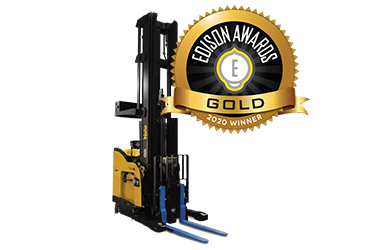

Greenville, North Carolina, 27834
United States
800-233-YALE
www.yale.com Yale Lift Truck Technologies Company Profile


The Yale® robotic reach truck expands the capability of robotic solutions in the warehouse. Its unique high-lifting ability helps operations use automation to service higher-level storage locations, helping maximize capacity as they face expanding inventories and ease the strain of hiring and re-training workers for repetitive, turnover-prone positions.
The robotic reach truck enables warehouses to:
Maximize storage density – Grow up, not out. Lift as high as 30 feet and reach into double-deep storage to maximize the cubic volume of a facility.
Reduce operator dependency – Efficiently deposit and retrieve loads at height without the need for manual operation by a worker.
Avoid integration hassles – No extra infrastructure like wires, magnets or tape – instead rely on a LiDAR system that uses existing structural features to self-locate and navigate, enabling easy route adjustment and faster startup at reduced cost.
Since the robotic reach truck is a standard Yale® lift truck outfitted with robotic technology, the nationwide Yale® dealer network is equipped to provide responsive, effective service it just as they would standard equipment. The Dual-Mode™ functionality allows personnel to switch from automatic to manual mode at the touch of a button, offering the flexibility to take control in the event of excess volume during peaks or other unexpected demands.




